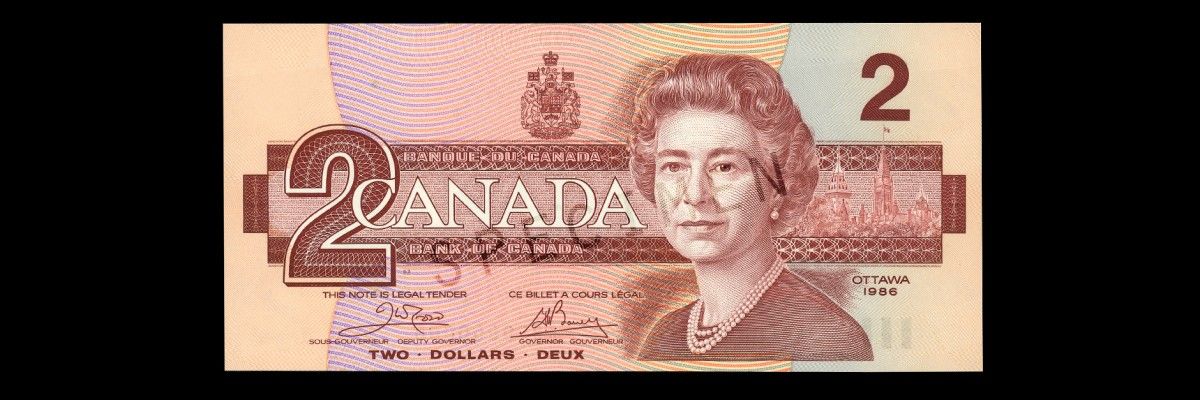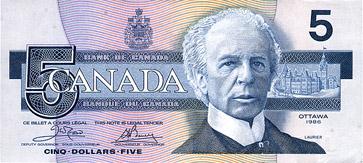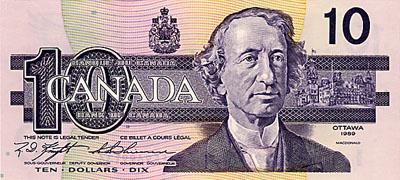It's difficult to maintain a national identity in a country where nearly all of the inhabitants live within a few miles of the USA, so you can hardly blame Canadians for sometimes feeling that Americans are infiltrating every last aspect of their culture. A tangible expression of this feeling occurred during the 1980s, when every time the Bank of Canada introduced currency with new designs, somebody managed to find American flags hidden in the artwork.
The fun began with the introduction of a new $5 bill in May 1986:
In spite of all the careful planning that went into the creation of the new $5 bill introduced last May, no one at the Bank of Canada foresaw the controversy that would be created by the flag flying above the Parliament buildings on the note.
Since May, the Bank of Canada has issued repeated denials over allegations that the flag is not the Canadian flag or that it is the American flag.
The matter of the flag on the $5 bill was the subject of considerable discussion in the House of Commons before the summer break. During the June 17 debate on the introduction of Canada's new $1 coin, John Nunziata, the member for York South-Weston, told Parliament that he had received a call from a very concerned citizen who had been examining the note and thought that the flag flying over the Parliament buildings was not the Canadian flag as we know it.
"There was a concern," said Nunziata, "that it might in fact have been the American flag flying over the old Parliament buildings. We considered this to be an item of national concern so we pulled out the magnifying glass and took a very close look ... "
What Nunziata (and others) found with their magnifying glasses was that the flag flying over the centre block of the Parliament buildings was not an American flag, but the Red Ensign (which, although it was never Canada's official flag, served as Canada's recognized flag before being replaced by the Maple Leaf Flag in 1965):
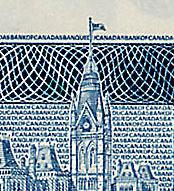 | 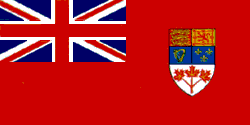 |
The introduction of a new $2 bill in September 1986 brought claims that it, too, depicted an American flag flying over Parliament (a claim which continues to circulate widely on one of those ubiquitous Internet lists of unusual "facts"), but as the inset in the image below shows, the flag in question is clearly Canada's current national flag, the Maple Leaf Flag:
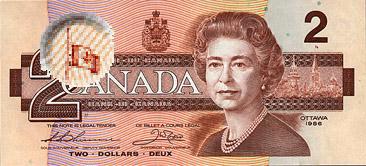
Three years later, when the Bank of Canada introduced a new $10 bill, the same old rumor was trotted out yet again (perhaps spurred by the implementation of the Canada-U.S. Free Trade Agreement earlier that year):
Canada's new $10 bill must be immediately withdrawn from circulation because it carries a subliminal message to persuade Canadians to join the United States, a group opposed to free trade maintains. The message is in the flag behind Sir John A. MacDonald's head, said David Mayor, spokesman for Survival Canada.
The group believes the tiny flag on the new bill — which came into circulation June 27 — was deliberately designed to resemble the stars and stripes of the American flag. "Next thing you know, we'll be the 51st star on the American flag," Mayor said. "Nothing should be flying above Parliament besides the Canadian red maple leaf flag."
This one does look quite a bit like an American flag at first glance, but the crest (the dark spot in the lower right-hand corner) gives it away as the Red Ensign again:
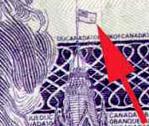 |  |
Frightened Americans used to look for Soviet Communists under their beds. Who'd have thought Canadians would top that by looking for American flags over their Parliament?
